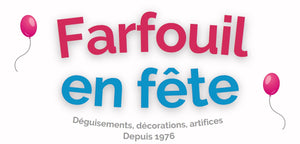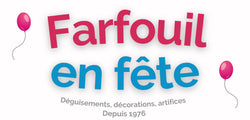Flaunting horrific wounds for Halloween has become very common, especially among adults.
But did you know that there are several ways to do them?
A touch of fake blood over it (or not) and you'll have created a wound in seconds.
The +
Its affordable price
Its speed and ease of use
Removes easily
The -
The rendering is very simplistic, even if the quality and realism of the tattoos has greatly improved in recent years.
Once posed and dry, it will have to be made up using cosmetics (to blend it with the skin) and fake blood (if it is an open wound).
The +
Its affordable price
The wound is already done, you just have to glue it
Can be reused (if we take care of it of course!)
The -
Lack of realism if it is not made up
Glue is not always included (check this information when ordering)
Who says glue, says slightly painful removal
Tip: Run the wound under hot water to soften the skin and the glue, allowing you to remove it painlessly.
Halfway between the tattoo and the prosthesis, the transfer FX is very easy to use.
It can be called a 3D tattoo, since it is applied using a damp sponge, and the wound is in relief on the skin.
The wound blends naturally into the skin, giving it a horribly realistic appearance.
With or without makeup, it is, in my opinion, the best choice to create a wound, of professional quality, without having the talent of an FX makeup artist.
The +
The simplicity of application (provided you refer to the instructions for use of course)
Its realism, even without having been made up
Its reasonable price, given the results and rendering!
A large selection of wounds, scars, prostheses (false forehead, horns, insects for example)
The -
Not reusable: once removed, it is thrown away
As with the prosthesis, removal can be painful (the hot water trick will help you here too)
In the form of a tube or bottle , the liquid latex may be white/translucent or colored .
It is used either to glue a prosthesis (or any other object), or to make the scar directly on the skin. This way of proceeding will require a little practice, since depending on the desired rendering, the technique of use will not necessarily be the same.
There are also “ theatrical skin ” creams that wrinkle and age the skin as it dries, or even “ horrible skin ” creams that crack when dry.
Fortunately, there are many tutorials on the internet, to train you before the big day.
The +
The choice of wounds is endless, since you create them yourself
The affordable price
The -
Requires a little practice before having a beautiful result, worthy of professionals
Waiting for drying between several coats
MODELING PASTE / MODELING WAX
Modeling paste will allow you to "model" (as its name suggests) a wound or scar, but can also reduce and modify the appearance and relief of the skin by filling it in or hollowing it out.
More or less solid depending on the model, it will take a long time to work and heat it to shape it.
Having technique and practice to use this wax is advised.
The +
As with latex, the possibilities are endless
Its color blends well into the skin.
Natural and realistic rendering
The -
Not necessarily easy to use
Requires time and technique to be modeled
All these products mentioned in this article are of course available in our store and on our online store.





















